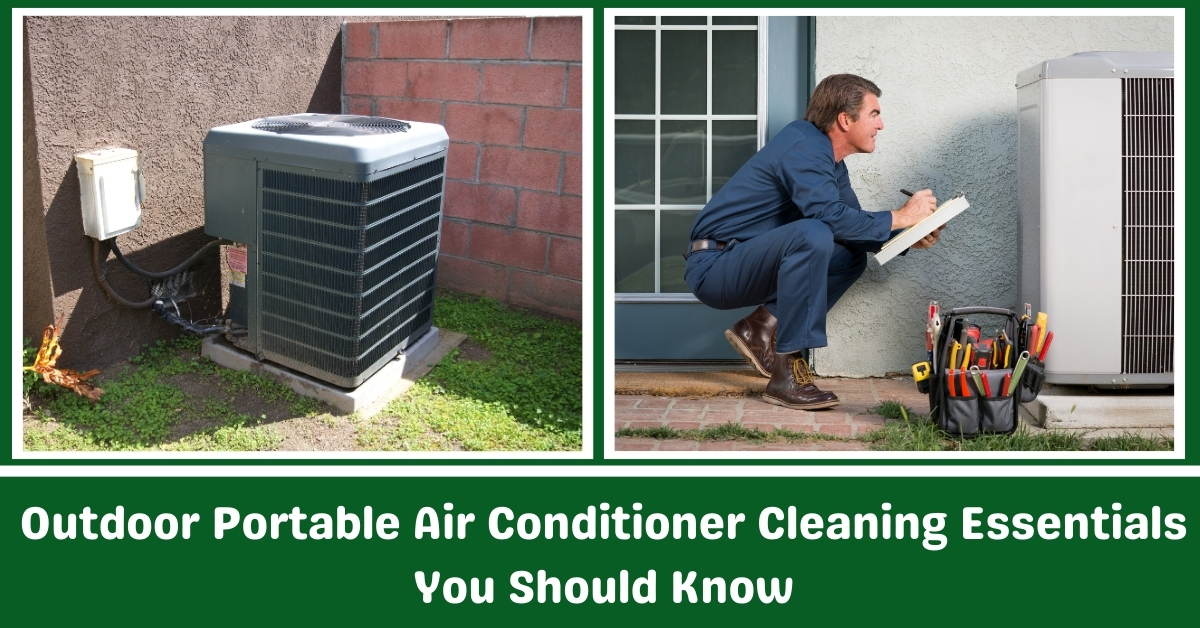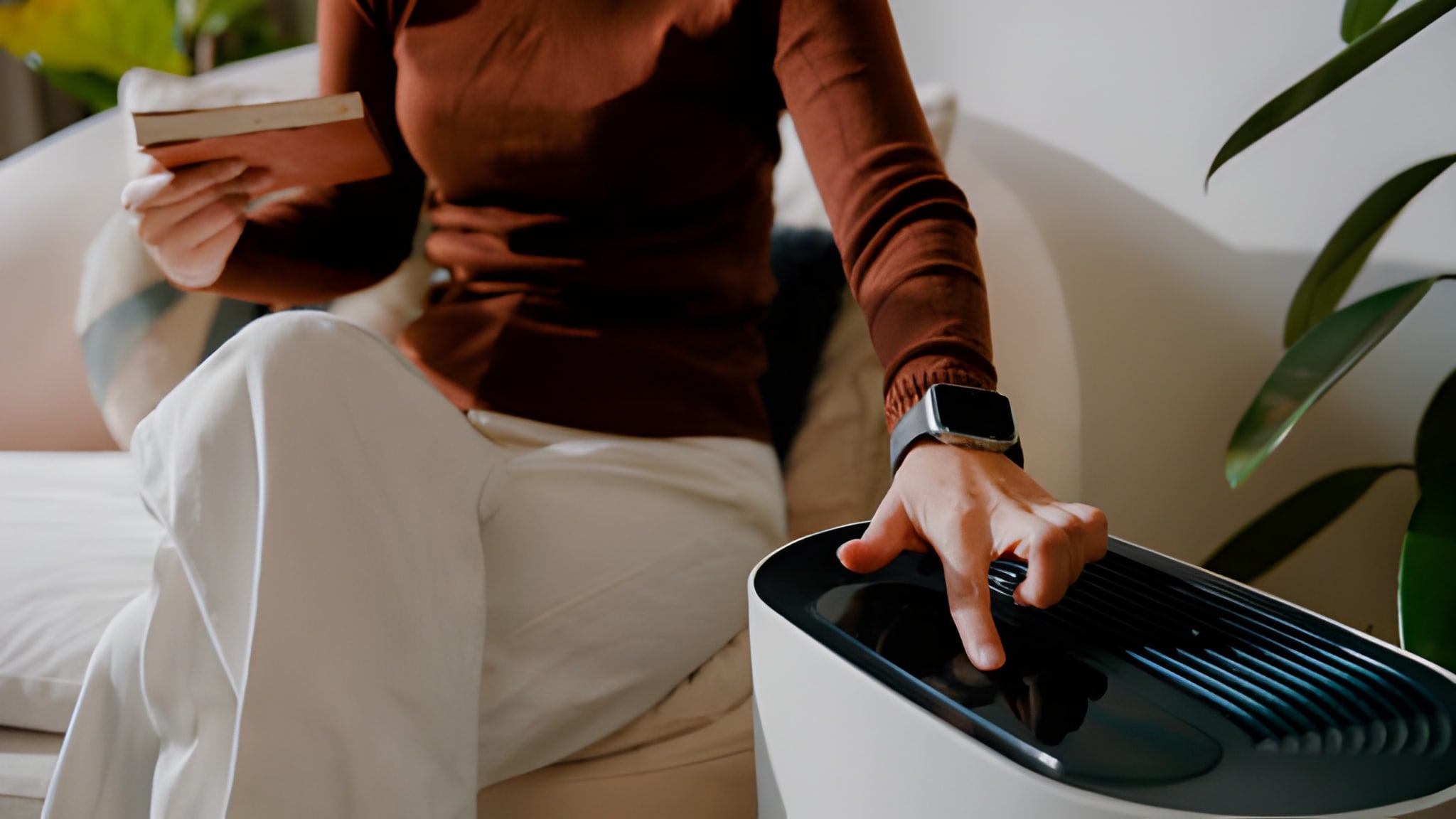When the heat rises and you rely on your outdoor portable air conditioner for relief, the last thing you want is poor performance or unexpected breakdowns.
Over time, dust, dirt, moisture, and even mold can build up inside your unit, making it work harder and less efficiently.
Studies show that dirty filters and coils can reduce cooling capacity by up to 30% and increase energy consumption by as much as 25%.
Regular cleaning isn’t just about keeping your machine looking good it’s essential for maintaining strong airflow, consistent cooling, lower electricity bills, and longer equipment life.
Many portable air conditioner owners overlook basic maintenance because they assume it’s complicated or time-consuming.
In reality, with a few simple tools and a clear step-by-step approach, you can keep your unit running like new without much hassle.
Whether you’re cooling a backyard party, a garage workshop, or a campsite, knowing how to properly clean and care for your portable AC makes all the difference.
Outdoor Portable Air Conditioner Cleaning Essentials You Should Know
In this guide, we will explain the essential steps, tools, tips, and best practices for cleaning your outdoor portable air conditioner the right way.

Why Cleaning Your Portable Air Conditioner Matters
Keeping your outdoor portable air conditioner clean is necessary to maintain its cooling performance, energy efficiency, and lifespan. Over time, dust, dirt, and moisture naturally build up inside the unit, blocking airflow and forcing it to work harder than necessary.
When airflow is restricted, the system cannot cool properly, causing uneven cooling and a noticeable drop in overall performance.
A clogged or dirty unit also uses more electricity because it has to run longer and work harder to reach the desired temperature, leading to higher energy bills.
Additionally, dirty coils and filters trap moisture, creating an environment where mold and bacteria can thrive, which negatively affects the air quality you breathe.
Without regular cleaning, essential components like the fan motor, compressor, and evaporator coils wear out faster, resulting in costly repairs or the need for early replacement.
Cleaning is not about making the unit look better; it is about ensuring it works the way it should without putting unnecessary strain on its parts.
For anyone relying on portable cooling, especially outdoors, regular cleaning is a basic but critical maintenance task that directly impacts comfort, health, and operating costs.
Step-by-Step Guide: How to Clean Your Outdoor Portable Air Conditioner
To clean your outdoor portable air conditioner properly, you should always start by unplugging the unit from the power source to ensure safety. Move the unit to a clean, flat workspace with good ventilation.
Begin by removing the air filter, which is usually located at the back or sides of the unit. The filter can either be vacuumed gently to remove dust or washed with warm water and mild soap if it’s heavily soiled.
Make sure the filter is completely dry before reinstalling it. Next, clean the exterior of the machine using a damp cloth and mild detergent, wiping down all surfaces carefully without allowing water to enter the inside of the unit.
After the exterior is clean, open any panels that give access to the internal parts, following the user manual if necessary.
Use a vacuum with a brush attachment to remove dust buildup inside, paying close attention to the evaporator coil and condenser coil areas.
For tougher dirt, spray the coils lightly with water and gently scrub them using a soft brush, making sure not to bend any delicate fins. Straighten any bent coil fins using a fin comb to maintain proper airflow through the coils.
If your portable air conditioner has a drain tank or hose, empty it completely and rinse it out with clean water.
In units that produce a lot of condensation, it’s important to check for any clogs in the drain hose and flush it with water to prevent mold and mildew from developing.
Once the internal cleaning is complete, allow all parts to dry fully before reassembling the unit.
Finally, plug the air conditioner back in and run it for a few minutes to confirm that it is operating smoothly and pushing out clean, cool air.
Regular cleaning following this step-by-step approach ensures your portable air conditioner continues to deliver effective cooling when you need it most.
Common Cleaning Mistakes to Avoid
When cleaning a portable air conditioner, several common mistakes can reduce effectiveness or even cause damage to the unit. One major mistake is forgetting to unplug the unit before starting.
Working on an appliance that is still connected to a power source is dangerous and can result in electrical shock or damage to the system.
Another frequent error is using harsh chemical cleaners that can corrode or weaken plastic and metal components inside the unit. Always stick to mild detergents and simple water solutions for safe cleaning.
Many people clean the exterior surfaces but neglect important internal parts like the coils and fans, assuming they are fine because they are hidden. This leads to hidden dirt accumulation that impacts performance over time.
Another mistake is not letting washed filters or internal parts dry completely before reinstalling them. Moisture trapped inside the unit can lead to mold growth and bad odors.
Rushing through the cleaning process without checking the drain lines is also a common oversight. Blocked drains can cause water to back up into the unit, leading to leaks and potential electrical problems.
Additionally, some users may apply too much pressure when scrubbing coils or vacuuming, damaging the sensitive fins that are essential for efficient heat transfer.
Lastly, only cleaning once a year or ignoring regular maintenance completely will significantly reduce the efficiency and lifespan of the air conditioner.
Being consistent, careful, and thorough prevents these problems and helps the unit stay in good working condition.
How Often Should You Clean a Portable Air Conditioner
How often you should clean a portable air conditioner depends on how much and where it is used, but a general rule is to perform basic cleaning once a month during heavy use and a full deep clean at least twice a year.
If you use the air conditioner outdoors regularly, especially in dusty or humid environments, you should clean it more frequently. Dust, pollen, and debris from outdoor air can clog the filter and coils faster than indoor use.
The air filter, being the first point of contact with airborne particles, needs to be inspected every two weeks during periods of regular use. If it looks dusty, it should be cleaned immediately rather than waiting for a schedule.
The drain system should be checked once a month to prevent mold buildup, especially if the unit produces a lot of condensation.
For the evaporator and condenser coils, a light cleaning every season helps maintain efficiency. If you are packing the unit away at the end of the summer, a thorough cleaning and drying process is essential to prevent mold and corrosion during storage.
Regular maintenance based on these intervals ensures the air conditioner runs effectively when needed and avoids costly repairs down the line.
Signs Your Portable AC Needs Cleaning
Recognizing the signs that your portable air conditioner needs cleaning can prevent serious problems and loss of cooling performance. One clear sign is reduced airflow.
If the unit’s fan seems weaker than usual or the air coming out feels less forceful, it often means the filter or coils are clogged. Another sign is an unusual odor.
Musty, damp, or moldy smells when the unit is operating typically indicate mold growth inside the filter, drain, or coils.
Water leakage around the unit also signals that the drain system may be clogged or not working properly, leading to water pooling inside and spilling out.
Another warning is that the unit is making louder or unfamiliar noises. If you hear rattling, buzzing, or wheezing sounds, dirt may be blocking the fan or interfering with moving parts.
A spike in your electricity bill without any increase in cooling needs can also suggest that the unit is working harder because it is dirty inside.
Lastly, if you notice the unit cycling on and off more frequently than normal or struggling to maintain set temperatures, internal dirt buildup could be causing the system to overheat and shut down as a safety measure.
Paying attention to these signs and cleaning promptly will help the unit operate safely and effectively.
What About Deep Cleaning
While regular monthly maintenance handles surface dust and minor buildup, deep cleaning is necessary to restore the unit’s full performance and prevent hidden problems.
Deep cleaning involves completely opening the unit’s casing to access and clean parts that regular maintenance might miss, such as the internal fan motor, blower wheels, and full evaporator and condenser coils.
To start a deep clean, the unit should be unplugged and disassembled according to the manufacturer’s instructions. Filters should be thoroughly washed or replaced if needed.
Next, the interior components should be carefully vacuumed and wiped down to remove caked-on dirt. Using a soft brush and water spray, the coils must be cleaned completely, taking care not to damage the delicate fins.
The drain system, including any pumps or float switches, should be flushed with a mild cleaning solution like vinegar and water to remove scale buildup and prevent future clogs.
During deep cleaning, it’s also wise to inspect the hoses and seals for cracks or leaks and replace any worn parts immediately.
If your unit uses refrigerant and shows signs of leaks or poor cooling even after cleaning, you must consult a licensed technician, as handling refrigerants requires specialized skills and certifications.
Performing a deep cleaning once a year, especially before or after heavy usage seasons, ensures that the portable air conditioner remains efficient, reliable, and free of mold or mechanical issues that could reduce its effectiveness.
Proper deep cleaning takes more time than routine maintenance but can save money and hassle over the long term.
Conclusion
Keeping your outdoor portable air conditioner clean is not just about better cooling it’s about protecting your investment, saving energy, and avoiding unexpected breakdowns.
Dirt, dust, and moisture buildup can quickly cut down the efficiency of your unit, leading to higher electricity bills and shortened equipment lifespan.
Regular maintenance, including basic monthly cleanings and yearly deep cleanings, ensures that your portable AC runs smoothly when you need it most.
Watching for warning signs like weak airflow, strange smells, or leaks can help you catch problems early before they turn into expensive repairs.
By following a consistent cleaning routine and avoiding common mistakes, you can keep your air conditioner working efficiently through the hottest days and harsh outdoor conditions.
Proper care is simple, requires only basic tools, and doesn’t take much time, but the benefits are significant. A clean portable air conditioner delivers better cooling, healthier air, and long-term reliability.
By making cleaning a regular habit, you’ll get more cooling power, better air quality, and more years of use from your outdoor portable air conditioner.





